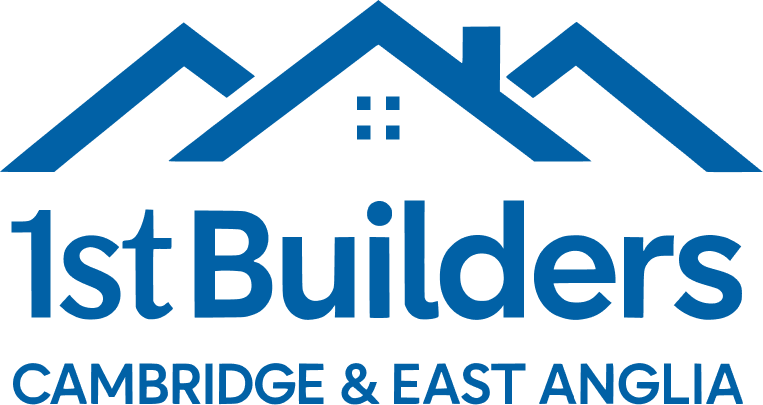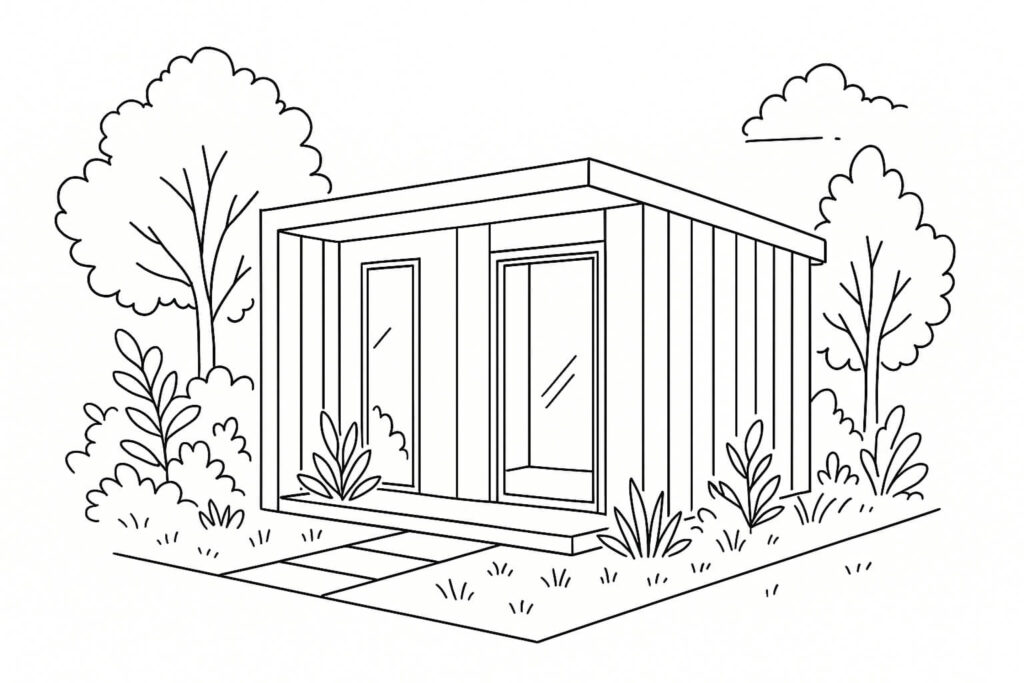Planning Permission: What Every Homeowner Needs to Know
Permalink: /planning-permission-cambridge-guide/
Navigating the planning permission landscape in Cambridge can feel like traversing a complex maze, particularly for homeowners who are unfamiliar with local regulations and procedures. Whether you’re considering a loft conversion, planning a house extension, or dreaming of a new garden room, understanding Cambridge’s planning requirements is essential for ensuring your project proceeds smoothly and legally.
Cambridge’s rich architectural heritage and status as a world-renowned university city means that planning regulations here are often more stringent than in many other parts of the country. The city council takes great care to preserve the character of different neighbourhoods whilst allowing appropriate development that meets the needs of modern families. This balance between preservation and progress creates a planning environment that requires careful navigation and expert understanding.
For homeowners embarking on improvement projects, the planning permission process can initially seem daunting. However, with proper guidance and understanding of the key principles, it becomes much more manageable. The secret lies in understanding what requires permission, what falls under permitted development rights, and how to work effectively with Cambridge City Council’s planning department.
Understanding When Planning Permission is Required
The fundamental question that every Cambridge homeowner faces when considering home improvements is whether their proposed project requires formal planning permission. This determination depends on numerous factors, including the size and nature of the proposed work, the location of your property, and whether the development falls within permitted development rights.
Permitted Development Rights represent a crucial concept that every homeowner should understand. These rights allow certain types of development to proceed without the need for a formal planning application, provided the work meets specific criteria and limitations. The government introduced these rights to reduce bureaucracy for smaller, less controversial developments whilst maintaining appropriate controls over larger or more sensitive projects.
For most residential properties in Cambridge, permitted development rights allow for single-storey rear extensions up to 6 metres for detached houses and 4 metres for other houses, provided neighbours are consulted through the prior approval process. Two-storey extensions are generally limited to 3 metres from the rear wall, whilst side extensions must not exceed 4 metres in height and must be at least 2 metres from any boundary.
Loft conversions often fall under permitted development rights, allowing homeowners to add up to 40 cubic metres of space to terraced houses or 50 cubic metres to detached and semi-detached properties. However, these rights come with strict conditions regarding the design and positioning of roof extensions, and any external alterations must be sympathetic to the existing property.
Conservation Areas represent a significant consideration for many Cambridge homeowners, as the city contains numerous designated conservation areas where additional restrictions apply. If your property lies within a conservation area, many permitted development rights are withdrawn, meaning that projects which would normally proceed without planning permission require formal applications.
Cambridge-Specific Planning Considerations
Cambridge’s unique character as a historic university city creates specific planning considerations that don’t apply in many other locations. The city council’s planning policies reflect the need to preserve the special character of different areas whilst accommodating the housing needs of a growing population.
Article 4 Directions apply to many parts of Cambridge, removing certain permitted development rights in areas where the council considers that normal permitted development could harm the character or appearance of the area. These directions commonly affect conservation areas and areas of special character, requiring planning applications for developments that would normally fall under permitted development rights.
The Cambridge Local Plan sets out detailed policies for different areas of the city, establishing guidelines for appropriate development in residential areas. Understanding these policies helps homeowners design projects that are likely to receive planning approval whilst avoiding costly redesigns or refusals.
Heritage Considerations play a significant role in Cambridge planning decisions. Many properties in the city are listed buildings or lie within the setting of listed buildings, creating additional constraints on what alterations are acceptable. Even properties that aren’t themselves listed may be affected by heritage considerations if they contribute to the character of a conservation area or the setting of nearby heritage assets.
Neighbour Consultation requirements in Cambridge often exceed the minimum statutory requirements, reflecting the council’s commitment to community engagement. Understanding these requirements and proactively engaging with neighbours can significantly improve the chances of planning success whilst maintaining good community relationships.
Working with Local Architects and Planning Consultants
The complexity of Cambridge’s planning environment makes professional guidance invaluable for most home improvement projects. Experienced local architects and planning consultants bring detailed knowledge of local policies, procedures, and the preferences of planning officers, significantly improving the chances of successful applications.
Choosing the Right Professional involves finding someone with specific experience of Cambridge planning matters. Local architects who regularly work in the city understand the nuances of different conservation areas, the preferences of different planning officers, and the types of design approaches that are likely to succeed. This local knowledge often proves more valuable than general architectural expertise.
Pre-Application Advice services offered by Cambridge City Council provide an excellent opportunity to test initial ideas before committing to formal applications. These services allow you to receive feedback from planning officers on your proposals, identifying potential issues early in the design process when changes are easier and less expensive to implement.
Design and Access Statements form a crucial part of most planning applications, explaining the design rationale and demonstrating how the proposal responds to local character and planning policies. Professional architects understand how to craft these statements effectively, presenting proposals in the best possible light whilst addressing potential concerns proactively.
The relationship between architects and planning officers often proves crucial to application success. Experienced local architects maintain professional relationships with planning officers, understanding their concerns and preferences. This relationship facilitates productive discussions about proposals and often leads to more successful outcomes.
The Planning Application Process: Step by Step
Understanding the planning application process helps homeowners prepare effectively and avoid common pitfalls that can lead to delays or refusals. The process involves several distinct stages, each with its own requirements and timelines.
Pre-Application Preparation represents the most critical phase of any planning application. This stage involves developing detailed proposals, conducting necessary surveys and assessments, and preparing all required documentation. Thorough preparation at this stage prevents delays later in the process and improves the chances of first-time approval.
Application Submission requires careful attention to detail, ensuring that all required forms are completed accurately and all necessary supporting documents are included. Missing information or incomplete applications lead to validation delays, extending the overall timeline and potentially affecting project schedules.
Consultation Periods allow interested parties, including neighbours and statutory consultees, to comment on proposals. Understanding who will be consulted and anticipating potential concerns allows applicants to address issues proactively, either through design modifications or additional information.
Officer Assessment involves detailed evaluation of proposals against relevant planning policies and material considerations. Planning officers consider factors such as design quality, impact on neighbours, highway safety, and compliance with local plan policies. Understanding these assessment criteria helps applicants present proposals effectively.
Committee Decisions apply to applications that officers cannot determine under delegated powers, typically because of significant public interest, policy conflicts, or officer recommendations contrary to parish council views. Understanding when applications might go to committee helps applicants prepare for this more formal decision-making process.
Common Pitfalls and How to Avoid Them
Experience shows that certain issues repeatedly cause problems for Cambridge planning applications. Understanding these common pitfalls helps homeowners avoid delays and refusals whilst ensuring their projects proceed smoothly.
Inadequate Neighbour Consultation represents one of the most frequent sources of planning objections. Proactive engagement with neighbours before submitting applications often resolves concerns early, preventing formal objections that can complicate the planning process. This engagement should be genuine and responsive, addressing legitimate concerns where possible.
Poor Design Quality often leads to planning refusals, particularly in sensitive locations such as conservation areas. Cambridge planning officers expect high design standards that respond appropriately to local character. Investing in quality architectural design often proves more cost-effective than attempting to address design concerns through multiple revisions.
Inadequate Supporting Information can delay applications or lead to refusals where officers cannot properly assess proposals. Understanding what information is required for different types of applications ensures that submissions are complete and can be processed efficiently.
Ignoring Policy Requirements represents a fundamental error that often leads to refusal. Cambridge’s planning policies are detailed and specific, requiring careful consideration during design development. Professional advice helps ensure that proposals comply with relevant policies whilst achieving client objectives.
Integration with Building Projects
Planning permission represents just one aspect of most home improvement projects, and understanding how it integrates with other requirements helps ensure smooth project delivery. Successful projects require coordination between planning permission, building regulations approval, and construction activities.
Building Regulations apply to most construction work, regardless of whether planning permission is required. These regulations ensure that work meets safety and performance standards, covering aspects such as structural integrity, fire safety, and energy efficiency. Understanding the relationship between planning permission and building regulations prevents confusion and ensures compliance with all legal requirements.
Construction Timing often depends on planning conditions that specify when work can commence or how it should be carried out. Understanding these conditions during the planning stage helps contractors plan work schedules effectively whilst ensuring compliance with planning requirements.
Discharge of Conditions may be required before work can commence, particularly for conditions relating to materials, landscaping, or construction methods. Planning these requirements into project timelines prevents delays and ensures that work can proceed smoothly once planning permission is granted.
For homeowners considering multiple improvements, such as combining house extensions with garden rooms, understanding how different projects interact from a planning perspective helps optimise the overall approach and potentially reduce costs through coordinated applications.
Future-Proofing Your Planning Strategy
Successful planning strategies often consider not just immediate requirements but also potential future needs and opportunities. This forward-thinking approach can save time and money whilst ensuring that current projects don’t preclude beneficial future developments.
Phased Development strategies allow homeowners to implement improvements over time whilst ensuring that each phase contributes to a coherent overall vision. This approach is particularly valuable for larger properties where multiple improvements might be desirable but not immediately affordable.
Permitted Development Calculations require careful management to ensure that current projects don’t exhaust available rights unnecessarily. Understanding how different types of development interact with permitted development allowances helps preserve options for future improvements.
Design Flexibility built into initial proposals can accommodate changing family needs without requiring additional planning applications. This might involve designing extensions that can easily be subdivided or modified, or ensuring that services are installed to accommodate future requirements.
Conclusion
Successfully navigating Cambridge’s planning system requires understanding, preparation, and often professional guidance. Whilst the process can seem complex, homeowners who invest time in understanding requirements and work with experienced professionals typically find that their projects proceed smoothly and achieve excellent results.
The key to planning success lies in early engagement with the process, thorough preparation, and realistic expectations about timelines and requirements. Whether you’re planning a simple loft conversion or a complex house extension, understanding Cambridge’s planning environment helps ensure that your project contributes positively to the city’s architectural heritage whilst meeting your family’s needs.
Remember that planning permission is just the beginning of your home improvement journey. Working with experienced Cambridge building contractors who understand both planning requirements and construction realities ensures that your approved plans translate into beautiful, functional improvements that enhance your home and lifestyle for years to come.






